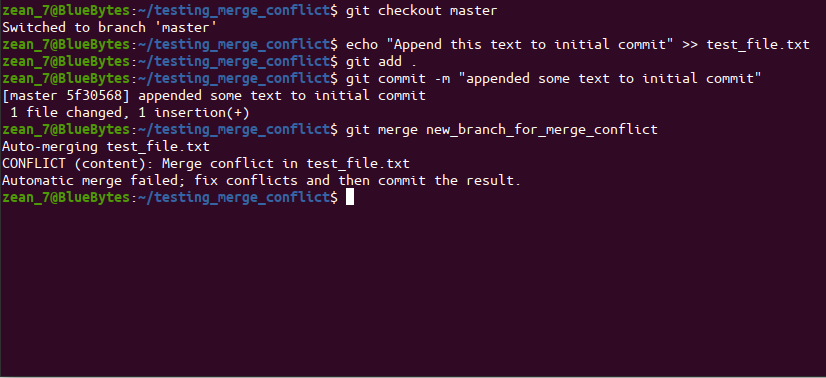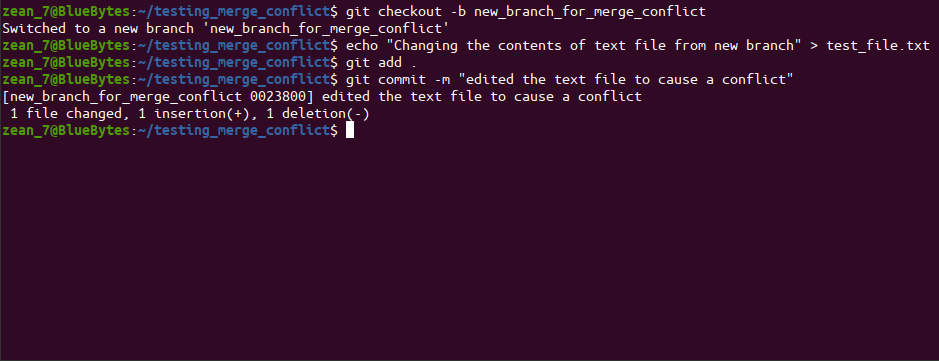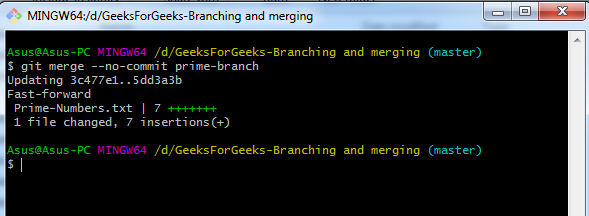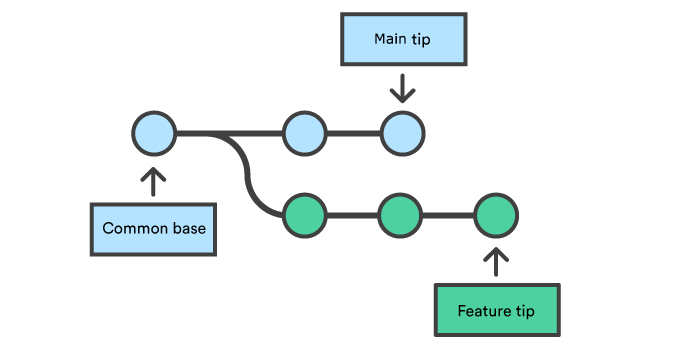Not Something We Can Merge
Introduction:
Merging is a commonly used operation in software development and version control systems like Git. It allows developers to combine changes from multiple sources into a single, unified version. However, there are certain situations where merging is not a feasible option. In this article, we will explore the concept of merging, its limitations in specific scenarios, and alternative approaches that can be employed. We will also address frequently asked questions related to merging and provide insight into topics such as Git merge, fatal: refusing to merge unrelated histories, Git merge force, un-merge Git, cancel merge Git, Git merge tag, and the error message “Your local changes to the following files would be overwritten by merge: Not something we can merge.”
Understanding the concept of merging:
Before delving into the limitations and challenges of merging, it is important to understand the concept itself. Merging, in the context of software development, refers to the process of combining two or more sets of changes into a single, unified version. This is particularly useful when multiple developers are working on the same project and need to integrate their changes seamlessly.
The limitations of merging in certain situations:
While merging is a powerful and efficient tool, there are certain scenarios where it may not be the best approach. One example is when the changes being merged are unrelated or have conflicting modifications. In such cases, Git, a popular version control system, will display the error message “fatal: refusing to merge unrelated histories.”
Another limitation arises when attempting to merge changes that have been extensively modified or diverge significantly from each other. Git may encounter conflicts and either prompt for manual resolution or refuse to merge at all, preventing the possibility of a successful merge.
Unique characteristics of the subject that prevent merging:
Some subjects or entities possess unique characteristics that make merging impractical or impossible. For instance, consider two different branches in a version control system—one representing the development of a web application and the other a mobile application. These branches have distinct codebases, architectures, and dependencies. Attempting to merge such unrelated branches could lead to complications and errors, ultimately rendering merging ineffectual.
Exploring alternative approaches:
When merging is not a viable solution, alternative approaches can be employed to address the challenges. One alternative is rebase, which allows changes to be applied on top of a different branch or commit. This approach can help reconcile divergent histories and resolve conflicts more effectively.
Another alternative is cherry-picking, where specific changes or commits are selected and applied to another branch independently. This approach is useful when individual modifications or features need to be incorporated into a different branch without merging the entire history.
Potential challenges in combining the subject:
Combining certain subjects may pose various challenges. For instance, merging files that are structured differently or encoded in different formats can lead to conflicts, difficulty in interpreting data, or loss of vital information. Therefore, ensuring compatibility and consistency between the subjects prior to merging is essential.
The benefits of keeping the subject separate:
In some cases, it may be beneficial to keep subjects separate rather than attempting to merge them. By maintaining the individuality of distinct branches, projects can be managed more effectively, allowing greater flexibility, scalability, and maintainability. This approach also avoids potential conflicts, ensures efficient bug isolation, and simplifies the process of rolling back changes.
Embracing the individuality of the subject:
Ultimately, it is important to embrace the individuality of subjects or entities that cannot be merged. Just as different branches in software development have their unique purposes and goals, so do other systems, organizations, or elements in different contexts. Recognizing and respecting these differences can lead to more effective problem-solving, collaboration, and innovation.
Frequently Asked Questions (FAQs):
Q: What does “fatal: refusing to merge unrelated histories” mean in Git?
A: This Git error message occurs when attempting to merge two branches that have unrelated or incompatible commit histories. Git refuses to merge them automatically, as there is no common ancestor to establish a meaningful relationship between the branches.
Q: How can I force a merge in Git?
A: Git provides the “–allow-unrelated-histories” flag to force a merge of unrelated branches. This option overrides the default refusal to merge unrelated histories and enables the merge operation.
Q: Can I un-merge changes in Git?
A: While there is no direct “un-merge” command in Git, you can use the “git revert” command to undo a merge commit and revert to the state before the merge occurred. This creates a new commit that undoes the changes introduced by the merge.
Q: How can I cancel a merge in Git?
A: To cancel a merge in Git, you can use the “git merge –abort” command. This command reverts the merge commit and restores the repository to the state before the merge was initiated.
Q: What is a Git merge tag?
A: A Git merge tag refers to a tag that represents a specific point in the commit history where a merge occurred. This tag allows for easy navigation and references to important merge points.
Q: What does the error message “Your local changes to the following files would be overwritten by merge: Not something we can merge” mean?
A: This error message indicates that there are local changes in your working directory that conflict with the changes being merged. To proceed with the merge, you must either commit or discard the local changes to avoid overwriting them.
Conclusion:
While merging is a fundamental concept in software development, there are situations where it is not a suitable solution. Understanding the limitations, challenges, and alternative approaches to merging is crucial for developers and teams. By recognizing the unique characteristics of subjects that prevent merging, exploring alternative methods, and appreciating the benefits of keeping subjects separate, developers can efficiently manage projects and embrace individuality while ensuring effective collaboration.
How To Resolve Merge Conflict Using Visual Studio Code
Keywords searched by users: not something we can merge Not something we can merge, Git merge, fatal: refusing to merge unrelated histories, Git merge force, Un merge git, Cancel merge git, Git merge tag, Your local changes to the following files would be overwritten by merge
Categories: Top 72 Not Something We Can Merge
See more here: nhanvietluanvan.com
Not Something We Can Merge
Introduction (100 words)
————————————
English, with its rich history and culture, is one of the most widely spoken languages in the world. However, despite its popularity and accessibility, there are aspects of the language that can be quite perplexing. One such area is the concept of “merging” in English. In this article, we will explore the various instances where merging occurs in English and shed light on the reasons behind it. By understanding these nuances, we can enhance our grasp of the language and communicate more effectively.
Understanding Merging in English (400 words)
————————————
Merging occurs in English when two or more sounds unite to form a single sound. This phenomenon often arises due to phonetic or historical reasons. One common example is the merging of the “th” sounds. In some dialects, like in parts of London or New York City, the “th” sounds in words like “think” and “this” are merged with “f” or “v” sounds, respectively. Hence, you may hear someone say “fink” instead of “think.”
Another instance of merging is found in American English, particularly in the Southern United States, where vowel sounds merge together. This results in words like “pin” and “pen” sounding identical, both pronounced as “pin.” Similarly, “marry,” “Mary,” and “merry” may all merge into one sound, creating potential confusion for non-native speakers.
Merging can also occur in the context of verb conjugation. In certain dialects, such as African American Vernacular English (AAVE), the distinction between “is” and “are” is often merged, leading to sentences like “They is going to the store” instead of “They are going to the store.”
Furthermore, merging is not limited to sounds alone but extends to word combinations as well. For example, “going to” can often be merged into “gonna” or “wanna” used instead of “want to.” While these forms are widely used in informal speech, they should be avoided in formal or professional settings.
Frequently Asked Questions (485 words)
————————————
Q: Why does merging happen in English?
A: Merging primarily happens due to linguistic evolution and the influence of various dialects and accents. It is a natural occurrence in languages and can differ based on geographical region or social factors.
Q: Can merging hinder effective communication?
A: Merging can be a source of confusion, particularly for non-native speakers or those unfamiliar with particular dialects. However, understanding the patterns of merging and dialectal variations can aid in effective communication and comprehension.
Q: Is merging in English seen across the world or specific to certain regions?
A: Merging is a phenomenon that occurs in various languages and dialects around the world, not only in English. However, the specific sounds or combinations that merge can vary based on regional and cultural factors.
Q: How can non-native English speakers navigate merging?
A: Non-native English speakers can navigate merging by actively listening to and interacting with native speakers from different regions. Exposure to a range of speech patterns and dialects can promote better understanding and adaptation to merging phenomena.
Q: Do merging patterns change over time?
A: Yes, merging patterns are not fixed and can change over time. They are influenced by factors such as sociolinguistic trends, technological advancements, and cultural shifts. For example, the advent of mass media and increased global connectivity may lead to changes in merging patterns.
Q: How can merging impact language learning?
A: Merging can pose challenges to language learners as it requires familiarity with various sounds and their corresponding merged forms. However, exposure to comprehensive language learning resources and practicing with native speakers can help learners overcome these hurdles.
Q: Are there any benefits to merging in English?
A: Merging in English allows for a diverse range of accents and dialects, adding richness and variety to the language. It can also foster a sense of cultural identity and camaraderie among speakers of different dialects.
Conclusion (100 words)
————————————
English, with its myriad of regional dialects and accents, presents a fascinating study in merging. By delving into the concept of merging in English, we gain insight into the rich tapestry of this global language. Understanding the reasons behind merging, familiarizing ourselves with various dialects, and practicing effective communication can significantly enhance our command of English. Let us embrace the nuances of merging and celebrate the diversity that it brings to this incredible language.
Git Merge
Introduction
In the world of version control systems, Git has become immensely popular due to its efficiency and flexibility. One of the key features that makes Git stand out is its ability to perform seamless merges. Git merge allows developers to combine changes made in different branches, enabling collaboration and integration of code. In this article, we will dive deep into the concept of Git merge, exploring its uses, techniques, and best practices.
What is Git Merge?
Before delving into the intricacies of Git merge, let’s start with the basics. In simple terms, Git merge is a command that combines the contents of a source branch into a target branch. This Git command analyzes the differences between branches and applies the changes to the target branch, consolidating the codebase.
When to Use Git Merge?
Git merge is primarily used when you want to integrate changes from one branch into another, commonly known as branch merging. It is particularly helpful when multiple developers are working on a project simultaneously, contributing their changes in separate branches. By merging these branches, you ensure that all modifications are consolidated into the main branch, eliminating code duplication.
Types of Git Merging
Git offers two different merging strategies: Fast-Forward Merge and Three-Way Merge.
1. Fast-Forward Merge:
This type of merge occurs when the changes made in the source branch are applied directly onto the target branch. It commonly occurs when there is a linear progression of commits i.e., no additional commits have been made to the target branch since the source branch was created. Fast-forward merging is efficient, as it simply fast-forwards the target branch to the commit of the source branch.
2. Three-Way Merge:
Unlike fast-forward merging, a three-way merge is performed when multiple branches have made changes since they diverged from a common ancestor. Git analyzes the differences between the branches and creates a new commit that contains the merged changes. If conflicts arise (i.e., conflicting changes in the same files), Git provides options to resolve them manually.
Best Practices for Git Merge
To ensure seamless merging with Git, following these best practices can prevent potential conflicts and make collaboration easier:
1. Regularly update branches:
To reduce the chances of conflicts during merging, it’s essential to frequently update your branches with the latest changes from the main branch. This can be done using the ‘git pull’ command to fetch changes and apply them before initiating a merge.
2. Merge branches with a clear purpose:
Before performing a Git merge, it’s crucial to clearly understand the purpose of both the source and target branches. Make sure the branches have distinct functionalities to maintain a modular codebase.
3. Test merging on separate branches:
Instead of merging directly into the main branch, test merging on a separate branch first. This allows you to identify and resolve conflicts or unexpected consequences of the merge before implementing it in the main branch.
4. Resolve conflicts promptly:
During a Git merge, conflicts can arise when changes in different branches conflict with each other. It is essential to address these conflicts promptly to maintain code integrity and avoid problems in future development.
FAQs
Q: Can I undo a Git merge?
A: Yes, Git provides a command called ‘git revert’ that allows you to undo a merge commit, effectively rolling back to a previous state before the merge occurred.
Q: What happens if I merge branches with conflicting changes?
A: Git will notify you of any conflicting changes and mark them as ‘merge conflicts’. It allows you to manually resolve these conflicts by editing the conflicting files before finalizing the merge.
Q: Can I merge a branch into multiple target branches?
A: Yes, Git enables you to merge a single branch into multiple target branches simultaneously. However, keep in mind that each merge can have different outcomes, as the branches may have different configurations and codebases.
Q: Is it possible to merge specific commits or ranges of commits?
A: Yes, Git offers the ability to merge specific commits or ranges of commits using the ‘cherry-pick’ command. This allows you to apply selected changes from one branch to another, without merging entire branches.
Conclusion
Git merge is a powerful and essential feature for collaboration and code integration. Understanding the different merging strategies and following best practices can help developers effectively combine changes from different branches. By keeping your branches clean and resolving conflicts promptly, you can ensure a smooth and efficient merging process with Git. Mastering Git merge empowers developers to work seamlessly together, making version control an asset rather than a hindrance.
Images related to the topic not something we can merge

Found 14 images related to not something we can merge theme








Article link: not something we can merge.
Learn more about the topic not something we can merge.
- How to resolve git’s “not something we can merge” error
- Not something we can merge.md – GitHub Gist
- main – not something we can merge” : r/learnprogramming
- not something we can merge error when using branch updater …
- Git – Not Something We Can Merge – Kagunda JM
- handling git “fatal: upstream – not something we can merge”
- Git Clone step failing with “not something we can merge” error.
- Git 5 step 2 “not something we can merge”
- Git issue – ‘not something we can merge’ – Laracasts
- Getting error: merge: README – not something we can merge
See more: https://nhanvietluanvan.com/luat-hoc/